Judith Hamann
Goose Apparitions
Judith presents a collection of embryonic explorations falling under the broader umbrella of ‘goose studies,’ collating recent writing, performing, and thinking about geese. Drawing on research begun during a three month period sharing an island in Finland with a host of barnacle geese last year, thinking-with barnacle geese calls into question how we construct, and in turn how we might dissolve or alter how we perceive categories, marvels, and time. Here, Judith collects together work-in-progress fragments, responding to geese in all their simultaneous holding together of gaggle and skein, tangled and clear, mirabilia and mundane, they become (and in turn Judith also becomes) apparition, mark makers, maps, haunts.
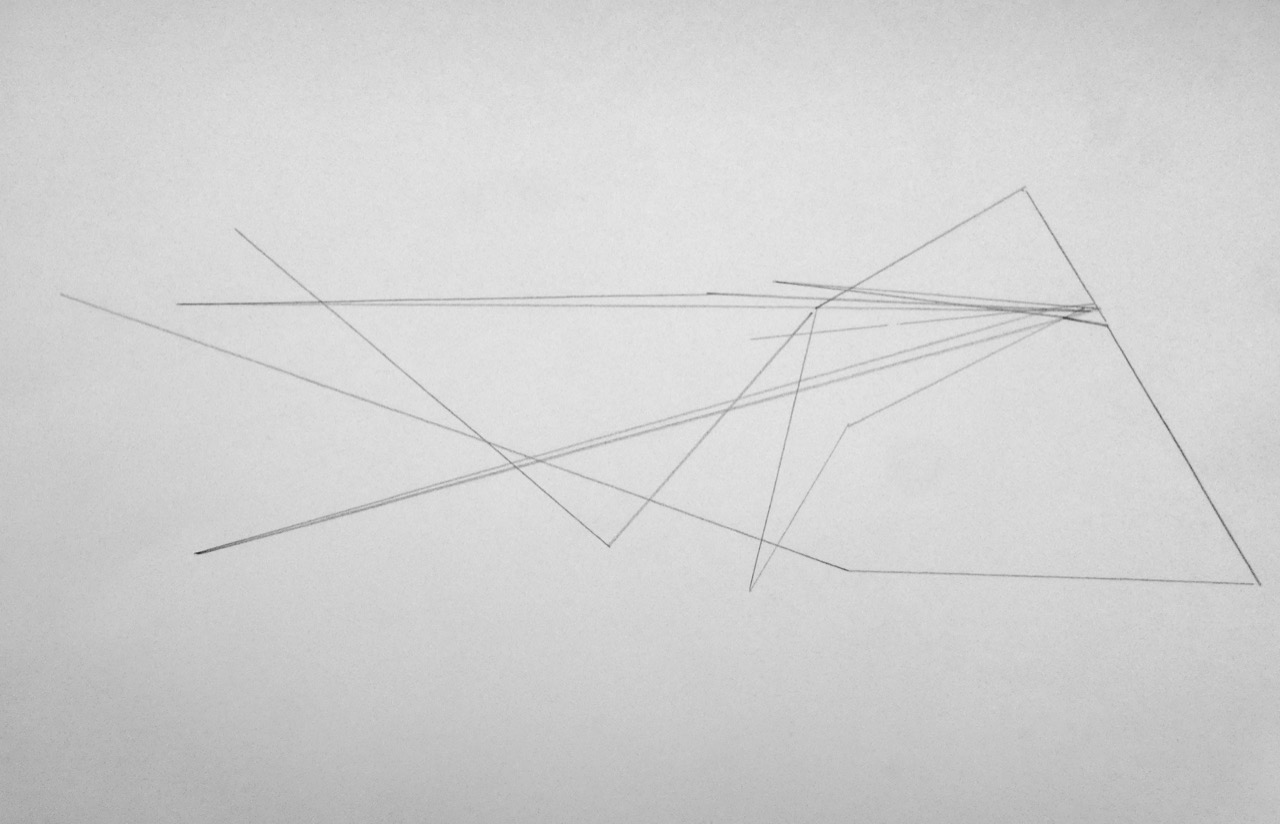
barnacle goose flight path drawing no. 1
graphite drawing based on goose data generated by the Southern Colour Marking Group, UK
Goose apparitions/Suomenlinna walk (audio)
A reading of the in-progress essay ‘goose apparitions’ with a spring 2020 routine evening A and B islands sound walk.
Sample of Ricercare in D minor, is from Schola Hungarica’s ‘Das Gänsebuch (The Geese Book)’ performed by Matthias Ank.
Goose apparitions
I wanted to make a piece about geese, but instead I found myself filming my own haunting.
Have I become a ghost rattling around my apartment? It feels as if anything could happen, that it might be entirely possible to be haunting myself, as if it might be possible to have exited linear, straight time, and be somewhere else entirely.
I am listening to recordings of my past self taking long walks around an island and the sounds of geese are almost omnipresent. I make too many cups of tea, stare at the contents of the fridge, and pace up and down the length of my one room apartment while listening. I keep catching myself matching my footfalls to the recordings, as if in some sort of sympathetic entrainment, as if by doing so I could somehow time travel, could collapse then, into now.
—
The barnacle geese arrived on Suomenlinna, a chain of islands near Helsinki, Finland, about a month after I did in late March last year. Just a few at first, but the population continued to swell, until they were just about everywhere by May.
No one from the artist in residence organisation hosting me there had mentioned the substantial migratory goose colony prior to this, and they were to me, entirely unexpected (I suppose so were most things that unfolded in the first months of 2020). Their presence in terms of my emotional, intellectual, and imaginary life grew in a similarly graphed curvature to that of their numbers, and I found myself beginning to orient myself via the geese: thinking about and with the geese to locate my own coordinates, as well as in the sense of ‘finding my way.’ [to borrow one sense of orientation from Sara Ahmed’s queer phenomenology].
—
The geese formed something analogous to a transitional fix for my-life-in-flux, something to pivot around, respond to, a reason to force myself outside each day. They were companions easily anthropomorphised, replete with distinctive characteristics and characters, local haunts, often very funny when on the ground, and breath-stopping [miraculous] in flight.
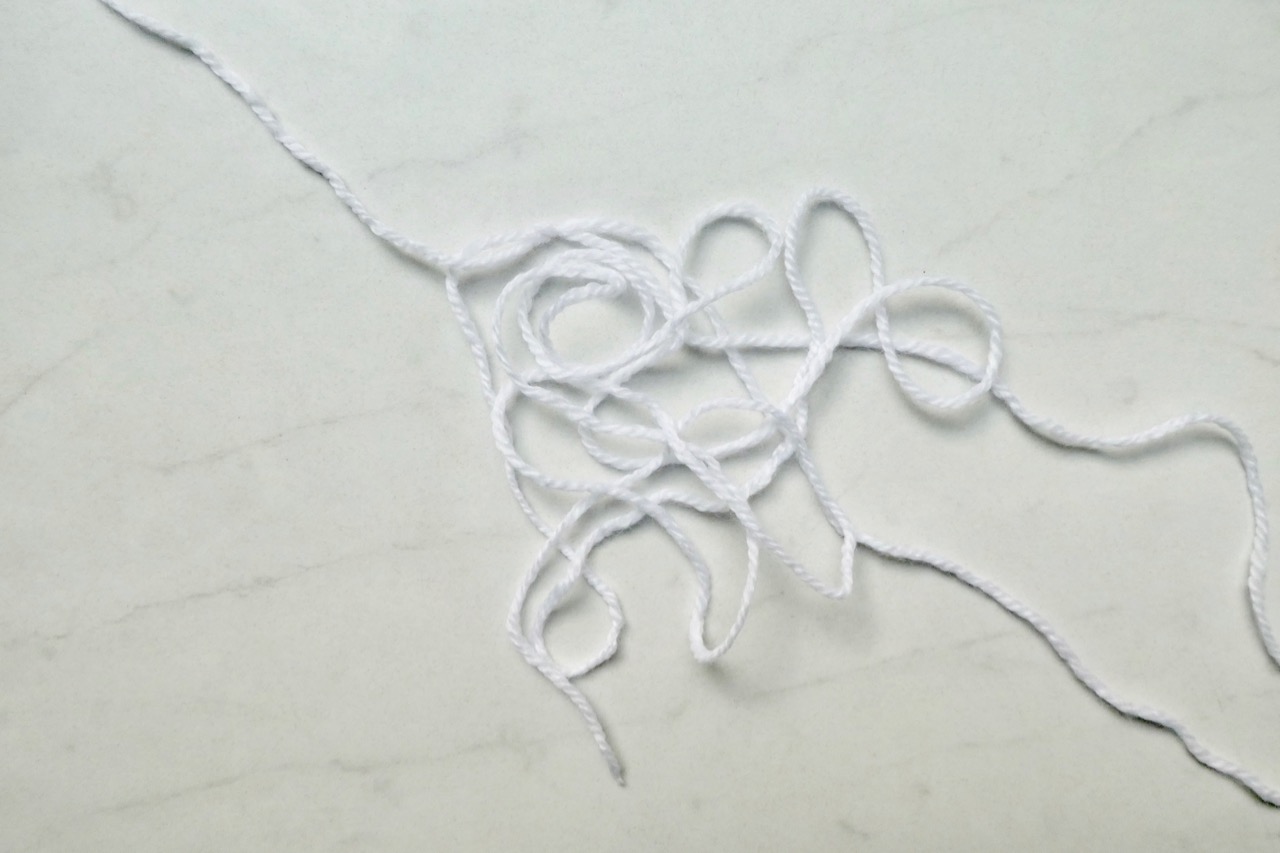
Skein Map #1

Skein Map #2
I suppose that I filtered the geese through a particular lens that shaped my time in that strange spring, the geese served as a sort of diffractive surface through which to view the world, keeping certain things in focus, and the periphery of what felt less possible to manage, mostly blurred.
Geese are multifocal creatures in terms of their behaviour, but also in the forms they take as linked with the language (in english) we describe them with. The collective noun for geese on the ground is a gaggle. To roll around the word gaggle in your mouth while observing the geese feels apt, almost onomatopoeic. Geese on the ground squabble, and hiss, they move in slow reconfigurations, pairs and triads shifting position, turning, rotating orientations. Grounded geese produce a sort of rolling, dubious, grumble, and a rising edge of exclamation which maps together contours of pitch and rhythm like some kind of avian geiger counter, a sondol for the proximity of any creature who they are not sure should be there, rising in density, amplitude, and pitch on approach; falling as you recede.
During this time, I started to think of myself predominantly in relation to the geese—I became an apparition, a shiver, like a break of gooseflesh (ha) on the backs of your arms. At a time that I felt as if I might have become somehow almost see through, gauzy, ghostlike, the geese became what I could most clearly refer to in order to register my solidity, my physical presence, my real-ness. The geese were, in themselves, a sort of community, that I was of course not at all included in, but somehow I felt more defined, less blurry, via being noticed and (mostly) tolerated by them, living in regular temporal cycles of encounter with them, through their grumbles and hisses, their sudden bursting into flight.
—
On an open field about a five minute walk from my studio a large gaggle, maybe thirty or so geese, always gathered in the late afternoon/early evening and among them was a goose with one leg, who I started thinking of a great deal. Geese fiercely protect injured members of their community, and I grew very fond, dare I say, even envious of this one legged goose and her tight knit community who rallied around her at the smallest hint of danger.
—
Geese fly in V formation as an aerodynamically sound practice, the buoyancy generated by each goose’s wing flaps ahead makes flying easier and less labor intensive for the other members of the formation. The lead goose has the hardest position with the greatest air resistance, but this role is rotated among the members of the group, there is no fixed leader.
There are many obvious analogies to be drawn from the cooperative, lateral structures of goose formations, so much so that ‘goose strategies’ have, somewhat bizarrely, even found resonances in various kinds of inspirational business consultancies, peddling goose-like-feel-good cooperation within unequal capitalist structures, to “be like geese!” as if the imagery of the camaraderie of the goose-team might salve or distract from the cruelty and violence of the systems in question.
I’m not sure what to be ‘like’ geese might mean in this context, perhaps to embrace certain human interpretations of their properties which mirror behaviours one wishes to encourage, a form of productive ethics?
Is there a way to consider geese that is less/non-extractive?
—
In flight, geese transform.
The english word for a constellation of geese is a skein, and I use ‘constellation’ here rather deliberately, as that is what I feel they become: relational coordinates rather than something as ambiguous in the description of their form as a ‘flock.’
A skein is perhaps more commonly, to the degree that skein is a common word at all, used in relation to wool. A skein is a specific bundling of wool, or twine (but never thread or rope, it is particular to its material) which has a central pull strand. It is a structure which is formed around its potential undoing [to be undone]. A woollen skein is loosely wound, often twisted. It is considered a fraction of roughly 1/6 to a hank, which is the larger form of wool coiling. In that sense a skein is a unit of measure, one that can be drawn roughly in terms of overall length being about 360 feet (roughly 110 metres).
Considering bundles as forms of measurement, makes me think of Marcel DuChamp’s ‘joke’ about the metre, ’Three Standard Stoppages,’: where three pieces of wool one metre in length are dropped from a height of one metre. Each time, of course, the formal shape of its landing is different and yet it still retains its identity as a unit of measure, creating a ‘new image’ of a ‘non-rational’ metre. It’s messy and perhaps even a grasping sort of thinking on my part I know, but I wonder about skeins in both wool and goose forms as non-replicable forms of measure, each iteration a specific rendering of length and material, coordinate, relation, and form.
—
The question of how a loose bundle of wool and the ‘V’ formation of flying geese are correlated is, I surmise, connected to the question of entanglement and labyrinths. A skein can also refer to something tangled, something difficult to decipher. I can imagine and almost feel the memory physically between my fingers of the near impossibility of undoing a bad wool snarl. It feels almost irreparable, the nodes of tightly snagged knotting and looser loopings, forming a new shape, that of the tangle: a form defined by a contradictory [[an almost oxymoronic]] amorphous ‘stuckness’: being fixed only as a result of a node/knot being unable to be undone.
How a tangle becomes an arrow in the english language is more specifically answered through thinking about the notion of labyrinths further, via the Greek myth of the minotaur and the labyrinth and its human leads, Theseus and Ariadne. To grossly over simplify the story: King Minos of Crete’s (almost) impossible to navigate labyrinth was designed by Daedelus to house the half bull, half human creature the minotaur (born Asterion, the minotaur was the result of one of those classic insult-to-a-God-punishment-trick-scenarios where King Minos’ wife Persiphae fell in lust/love with a bull). Young folks from Athens were sacrificed annually to the Minotaur, in the ‘tribute’ sense, all quite ‘hunger games™’ really, until one year a young prince named Theseus was sent, and King Minos’ daughter Ariadne fell in love with him. To save Theseus, Ariadne secretly gives him a dagger and a skein of wool before he enters the labyrinth, so that he can slay the minotaur and then find his way out, which he does, and then promptly abandons Ariadne on an island on his voyage home like a proper jerk.
The thing is, that a twist of wool, a skein, was also called a clew in old English, with its origins in the Germanic clewe. In its 1590s definition, it meant “anything that guides or directs in an intricate case” and was used fairly specifically only in relation to labyrinths and tangles. Over time, this gradually became dissociated with the labyrinth and came to mean “that which points the way,” and eventually, our contemporary definition and spelling: clue.
—
And so a skein is both a twist and an arrow, a tangle and a line, a snarl, yet also a clew/clue, a direction to follow, a point, a trajectory or orientation, a way to find one’s way home.
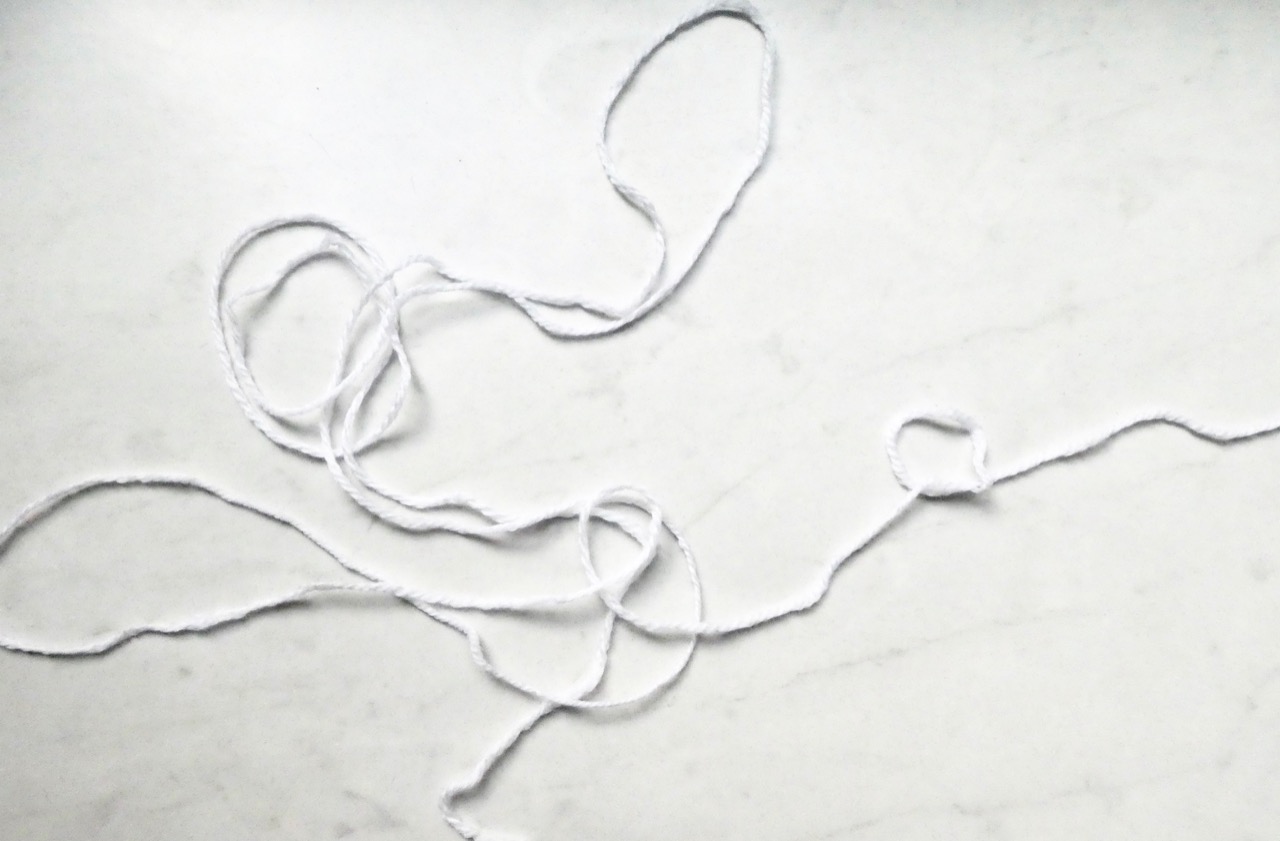
Skein Map #3
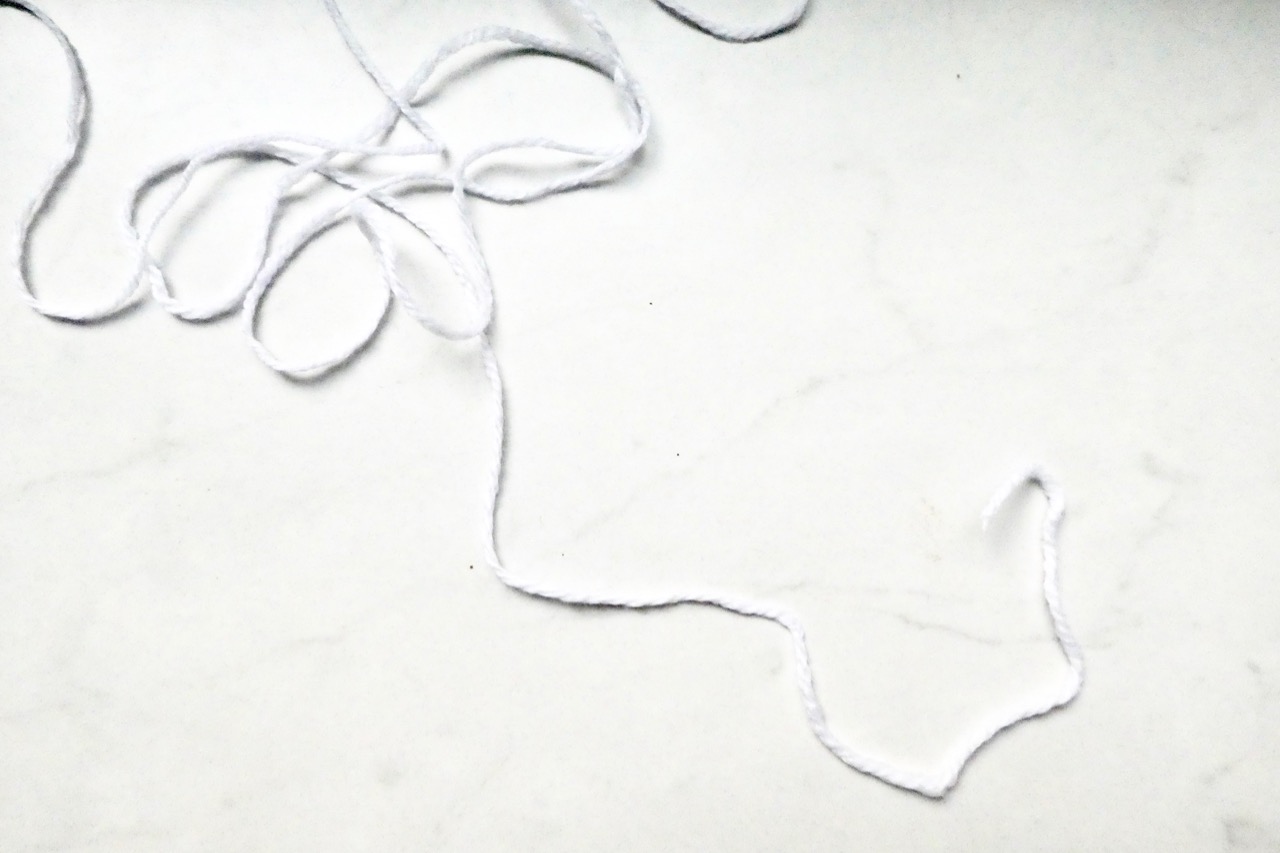
Skein Map #4
Home is a confusing idea for me now, but if we were to, just for a moment, think of home as place-of-birth, then mine would be Narrm/Melbourne, on the stolen lands of the Wurundjeri people of the Kulin Nation. In so-called-Australia we only have one native species of goose,[1] known in settler-colonial english language as the Cape Barren Goose but in the part of the world now dubbed ‘Cape Barren’ as wayintalutja. It is also known on the mainland by many other names in many languages, for example as laulwuri, a ngaitji (friend/totem) of the Talderar people of the Ngarrindjeri nation, in the place also known now as ‘Tolderol Point.’ These soft grey geese are quite shy, and known for their ability to drink salt and brackish water, which enables them to live mostly on offshore islands.
In other words, you don’t tend to come across any geese in the city I’m from.
This brief hemispheric shift is really only here as an attempt to explain some of my feelings about geese generally, and to make clear that before last spring, I had never seen a barnacle goose, or any of the Branta genus — Branta coming from ‘burnt’ and referring to geese with black plumage. I am aware that for many people more familiar with northern hemisphere geese, they are a nuisance, or a pest, or a background noise sort of bird, and that my interest in them may be vaguely irritating/confusing, even a bit odd, as if someone were deeply enthusiastic about city pigeons, myna birds, or seagulls mad with hot chip lust.
—
Barnacle geese are not endemic to the island of Suomenlinna, and their numbers there are a relatively recent phenomenon, driven in part by a shift in migration patterns that can be chalked up to various scales of human intervention, from the enormous (climate change) to the local (lack of open spaces for the geese over the Russian border). I understand that they’re becoming a terrible pest in terms of their impact on other birds, plants, and even somewhat disastrous for Finnish farmers. An International Single Species Management Plan has been drawn up to find ways of coexisting/coping with the three main barnacle goose populations in Europe, who have begun to pose problems for aircraft, and crops, the drift, the survival strategies of the geese are now bringing them into conflict/collision with human needs and desires.
Scientists are observing the geese change their migration patterns and timing in response to change of habitat, but they are unsure of whether the geese can adjust quickly enough to survive long term. Conditions in the Arctic Circle are changing so rapidly that even an adaptable, migratory bird can only barely keep up, although they are trying: shifting breeding windows and locations, altering flight paths, trying new rest spots, even just staying put.
In that sense, that the geese and I spent last year’s Spring visiting with each other, and the way in which it unfolded, represents a moment of encounter formed by human driven disturbances: the shifting in migratory patterning for the geese; the coronavirus’ leap from bat to humans and its travel driven spread; the alteration to my own wonky patterns of nomadic movement; my temporary grounding; coalescing in a shared moment of different movements, a suspension for me, while for the geese, things were very much in motion, the busy activity of adaptation.
—
Geese remember good rest stops, and tend to return to them. I can’t move around like a goose, but I find myself returning anyway, imagining, haunting.
—
Geese, like all migratory birds, are believed to be able to sense and navigate by magnetic fields. They possess the sense ‘magnetoception,’ a particular protein in the birds’ retinas enables them to see the light generated by the Earth’s magnetic field. I imagine what it would be like to have integrated into one’s body a relational system so connected to the earth, its magnetic poles, a connection to place coloured by a glow of magnetism.
—
On the far end of the chain of islands that make up Suomenlinna, there are slabs of rocks covered in human made markings, old school tagging from soldiers, sailors, and more recently tourists, in both cyrillic and latin alphabets, names, dates, sometimes words that are hard to make out, smudged by the sea wearing at them. Earlier on, I looked for the oldest date I can find, still thinking in linear time, trying to fashion my own occupation of the island into some sort of context. It becomes increasingly ambiguous to me over my time there, over countless visits, which marks are human and which are formed by the ocean, which are geological: made by movements of rock in a different metabolic temporal system.
—
I see another resident near the rocks. We talk at a distance (of course), shouting over the wind, and she yells “you can’t even sit on these rocks now, they’re totally covered in goose shit.”
I rather like the idea of the geese participating in an aleatoric, seasonal [temporary] overwriting of everything.
—
There is one place on the island that is less visited, less marked by people, and if you slide down the rocks a little from the cliff’s path, there is one soft curve of rock and plants there that always asks me to visit with it. These rocks feel completely different to the rocks that make up the buildings and residual structures of the Swedish and then Russian occupations of this island, the military fortress Sveaborg (or Viapori in Finnish). The rock of the fortress was mostly quarried from the island itself, (a gesture that feels to me a little like a form of geological cannibalism), however these cradling rocks I visit are part of the granite body of the islands, something (I imagine) finding its form in the Svecofennian orogen around 1700 million years ago. Their metabolism extends and collapses my own sense of time.
Here, it feels as if I am being held by the island, wrapped up by the rocks. Enfolded, in its etymolgoically entangled relationship to complicity. It feels almost loving.
I can’t tell if this is because I’m finally listening and the rocks are very alive/close here, or because I haven’t touched a person for several months.
Perhaps a mixture of both.
—
I’m not sure which time scale I’m on anymore, rock time, goose time, pandemic time, solitary time.
In thinking about external time as it is rendered observable by [what is in] motion, perhaps the geese have become more important than I realised. Even just as apparitions, with months and a thousand odd kilometres between us.
—
[1] The ‘magpie goose’ is, it turns out, not a goose at all, but the sole living species of the Anseranatidae family.
Goose Satellite Data Video (in progress)
Original footage taken from the Euro Bird Portal barnacle goose tracking data for 2019-2020
Geese, mythologically, or metaphorically, are often connected to time.
The Grágás, or “Grey Goose Laws” of 16th century Iceland, may have derived their title related in part from the perception of goose age, their association with timelessness. Geese were thought to live longer than any other birds. Geese in the part of the world that I encountered them in, also have connections in Sámi storying to the shape of certain concepts that we might describe from a settler-colonial positionality as wisdom, freedom, time and timelessness.
—
I stick and poke tattooed the outline of a goose on my right leg a couple of weeks before I left the island. “Tattoos are forever” they say, like a loose threat. Forever is an intimidating figure.
—
Barnacle geese specifically, mostly nested in Siberia prior to their more recent drift southwards, where they feature in creation storying. In the Mordvin variant of the (fairly widespread, really) earth-diver creation telling: from the saliva which God spits into the primordial sea in order to grow the world, the devil in the form of a goose appears. God tells the devil/goose to dive to the bottom of the sea to fetch the earth and bring it to the surface, however upon succeeding, the devil/goose attempts to secretly hide some of the earth in their cheek. The earth in the devil/goose’s mouth continues to grow until it can no longer be contained, and so from the goose cheek, are formed the mountains of the world.
—
In Finnish, the name for barnacle geese translates to ‘white-cheeked goose.’ This makes me imagine a barnacle goose holding all the mountains in that cheek, because of course, it is easy to think of mountains as belonging to the colour category of white if you come from somewhere where it snows.
Language, or rather the specificity of naming, filters so clearly the perception of which visual properties are most distinctive or important as relative to place: a white cheek, to appear ‘burned,’ a grey wing, a black beak, an embryonic resemblance to barnacles.
—
Barnacle Geese are, in certain circles which I have become increasingly aware of, one of the European scientific history world’s most ‘notorious’ goose species. This is due to a famous ‘misunderstanding’ of how the birds migrate and breed, and as a result for centuries, the barnacle Goose was thought to grow from driftwood, or barnacles, and at certain points even trees. A resemblance between the goose barnacle and the barnacle goose led to a conflation of the two as a means of explanation for the mystery of how these geese reproduced (their nesting behavior was not seen in central Europe or Britain due to their migratory patterns). This meant that this particular goose has been understood within a kind of shimmer of origins, in turn: a parthenogenic creature, a plant, an arthropod, pure miracle, a life emerging from non-life.
—
The now outdated, but once widely accepted belief in spontaneous generation, as it connected to the notion that a specific taxon of creature could emerge from other, unrelated organisms or non-life, was, in part, connected to the length of perpetuation of this myth. That trees could grow a goose barnacle, and via them, a barnacle goose, was not a stretch for the medieval imagination, and the barnacle tree persisted for centuries as an idea. Written and pictorial records of the barnacle-goose-tree assemblage stretch back to the 12th century at least, found in the work of Provençal rabbi Isaac ben Abba Mari, and the writing of Gerald of Wales, lingering on until finally laid to rest in the late 19th century.
Goose barnacles do actually build their own linked platforms, a way of clustering together, something that would not be immediately distinguishable from another material, such as driftwood. That driftwood birthed the goose barnacle, which in turn birthed the barnacle goose is among the variations of the myth, where they “develop from beams in the water and hang from trees enclosed in shells until they can grow feathers and fly.” [Gerald of Wales]
The idea that animals emerged from plants, is reflective of the European organisation of a hierarchy of living things as it has evolved over time. The notion of birds growing from trees, could be seen as in some sense, a grappling with the introduction of time to the historical comprehension of species formation. If life began with beings like Leibnitz’s ‘monads,’ or with single cell organisms, the logic that plants are a direct ancestor of arthropods or birds represents a reflection of a certain moment in European logics, one formed by its own ideology of progress, accumulation, and complexification.
The materials of plants, wood, pollens etc. were, by the romantic era, pushed beyond merely being not-alive to ‘dead’ matter, however it seems within the framing of the tree/animal entangled myth, they were also considered living things. ‘Sheep-like ‘creatures were at one time believed to grow from trees, something which John Buckeridge [whose barnacle research I am deeply indebted to here] suggests might form the origin of the German word for cotton, baumwolle, literally tree-wool, from tree-sheep.
—
The barnacle goose came for some time under the category, and this was an actual taxon, ‘Animalia Paradoxa‘, that is, “contradictory animals,” as grouped by Swedish scientist Carl Linnaeus in his Systema Naturae (this category was dropped by the 6th edition in 1748). This taxon included, in all earnestness; the hydra, the monoceros (or unicorn), the siren, and the manticore (strangely, it also included pelicans and antelope). At that time, the goose barnacle and the barnacle goose were part of this taxon as the same animal, with the barnacle and the goose forms being each one part of the paradoxa’s entire life cycle.
—
This particular species of geese, its nomenclature and history seem to pose some sort of not-quite-in-reach series of metaphors, as the barnacle goose, and the goose barnacle are far more tangled than merely a visual resemblance or nominal correspondence. Human understanding of the barnacle goose’s origin has been one that is molten and morphing, moving across our understanding of species and differentiation between animate and inanimate, mineral and animal, bird and tree, miracle and science, and rendering our means of categorisation, in terms of a European settler thinking way of understanding the world quite strange. The geese offer a sort of charting, providing a thread of how we might have thought about the world, and how we might think it.
—
While several authors claimed decisive sightings and testimony as to the barnacle goose/goose barnacle in its process of cross taxon life cycle, further investigations, such as that of future pope Pius II, Cardinal Piccolomini in the 15th century, were told upon finding no evidence of this phenomenon, to seek the barnacle goose/goose barnacle further afield, perhaps in the farther reaches of the Scottish hebrides. To this, Piccolomini apparently, and seemingly somewhat dryly remarked that “miracles tend to flee farther and farther.”
For some reason I keep returning to the idea of horizons lately, and this statement, for me, conjures a sort of palimpsest of imagery around the idea of goose horizons, the physicality of their V formations sliding towards them, as well as horizons in the utopian sense: in the activity of moving towards a horizon as an act of constant becoming, rather than an arriving.
I think here of José Esteban Muñoz’s queer horizons, of performance as an ephemeral materiality becoming and disappearing simultaneously, of Maria Siegel’s vanishing points, of what it might entail for a miracle to flee onwards always, moving towards different horizons of terrain, topographies, understanding, possibility.
Goose thinking in this sense, represents a process or a practice, rather than an outcome or object. It is active, an activity: always becoming, never quite arriving. Thinking in these skeins brings forth a kind of residue, a trace of ideas, a haunt if you will. In some sense, they form a kind of substance that cannot necessarily be ‘shown’ or held clearly, something opaque that I am still reaching for as I write this. Perhaps, it is that ideas do not necessarily disappear as they approach horizons, but are transformed, creating “another understanding of what matters,” [Muñoz] and through this, what matter itself might be and contain, generate and change.
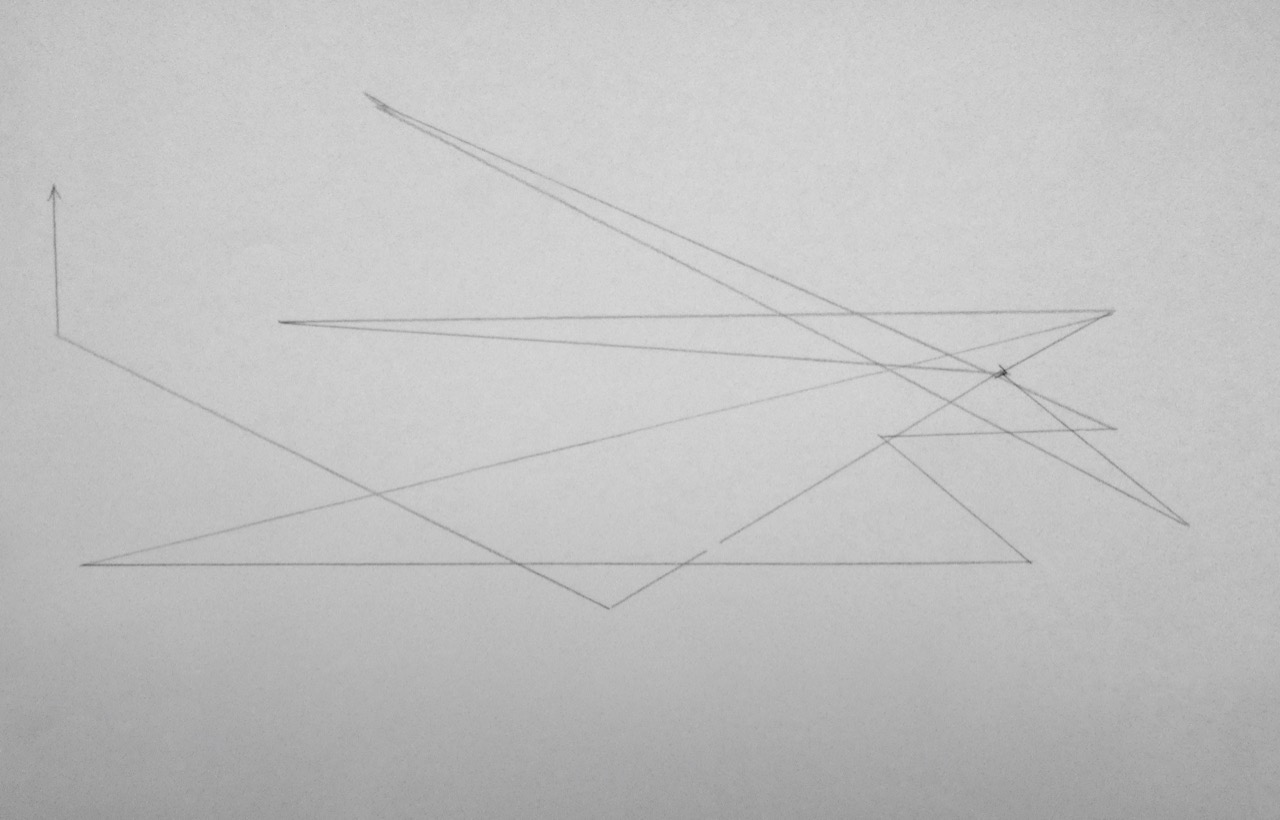
barnacle goose flight path drawing no. 2
graphite drawing based on data generated by the Southern Colour Marking Group UK
Barnacle geese were also used to perpetuate faith in marvels, in the natural designs of a higher being. They were held up in Christian theology as proof of parthenogenesis, or ‘virgin birth.’ Many of the recorded tracings of the history of the barnacle goose/goose barnacle are found in documents from both Catholic and Jewish scholars debating whether the goose was a bird, or a shellfish, and how the confusion regarding their in-between status as a category of animal might be applied to whether or not one could eat them, and when.
—
Charles Darwin researched and wrote extensively about barnacles (Cirripedia), and in a way, that work formed a crucial component in the development of his theory of natural selection. Between earlier notes on transmutation (the idea which would eventually be recast as evolution) and his work on the Origin of Species, for nearly a decade Darwin took what was widely perceived as an odd detour, and worked to clarify and unravel confusion about the nature of barnacles, something which owes its historical confusion to the barnacle goose/goose barnacle tangle. He noted, “Cirripedia do not approach (any animal) beyond the confines of the Crustacea,” and wrote, “I need hardly say that Science in her present state does not countenance the belief that living creatures are now ever produced from inorganic matter,” assertions which appear to resonate with the aim of a disentanglement of any residual cross-category ambiguity surrounding barnacles, and so via cirripedes, barnacle geese.
—
In French, the word used to refer to barnacle geese is canard, which remains a term that also means “a false report.”
—
Darwin struggled in his attempt to simultaneously refute the possibility of agency of living things, and theories of external design. In some sense, the idea of design and a ‘greater being,’ rather than disappearing from his work, went underground, but leaves traces, or teleology as linked to theology. [Riskin]
He used the term tendency a great deal: innate tendency, the tendency to vary, hereditary tendency (as a sort of memory), the tendency to complexity, to regress.
I have been thinking of this sense of tendency filtered through my own understanding of what it might mean to tend towards something, and I keep returning to desire. A falling stone desires the earth, laws of attraction, of pull.
—
Tendency also has as its etymological root ‘ten,’ meaning to stretch toward, could that not be a reaching for, a desiring?
Goose Study no. 1 (a contradictory animal) (audio)
for cello and guiro bow
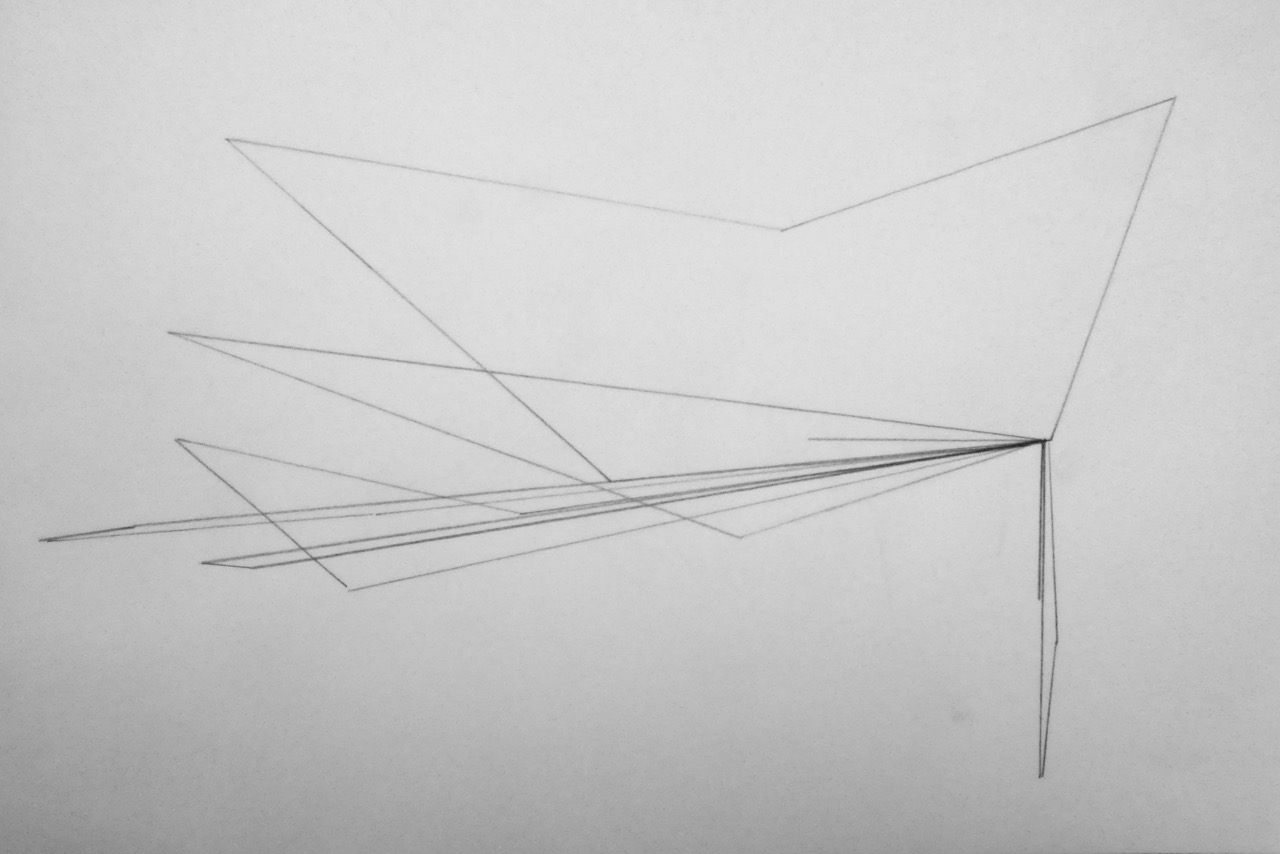
barnacle goose flight path drawing no. 3
graphite drawing based on data generated by the Southern Colour Marking Group UK
Charles Darwin (despite his efforts) and Darwinism/Neo Darwinism more so, were in some ways unable to fully untangle themselves from theology as subtext, from an understanding of the world still deeply formed by the notion of nature as passive, mechanical, of brute matter, and God or ‘designer’ as active. There is something, a trace of that theological foundation to European thinking still, about the difficulty many settler-colonial humans have in conceiving of not only animals, but rocks, metals, land, rivers as possessing agency, as such a thing is not possible within the frame of the lingering ghosts of a colonial historical thinking system in which life is bestowed from above. In this designation, animals are mechanical, and the concept of ‘man’ is decidedly positioned as centre, or above [by ‘man’ of course I mean a specific kind of human: white, wealthy, cis, straight, men, with access to European heritage forms of education. Humans not belonging to this rubric of ‘man’ have been, and continue to be in certain cultural formations, historically othered: grouped in proximity to or with animals, as ‘nature’, or considered purely material (cargo, capital, data)].
Despite contemporary science and biophilosophy moving decidedly in the direction of a shift in understanding of agency as the ability to self organise, leaning more towards a “conatus” or creative striving, a reinvention of understanding of spontaneous generation, or irreversible processes in chemistry, of becoming-in-time rather than being outside of time, this feels not to have translated somehow. Mechanistic, positivist, human-centred, closed system thinking now looms large as threats to survival of many beings across various entangled categorical formations of bodies, only some of which we might also think of as species.
Perhaps this is connected to the inability to think our way out of linear time, growth, beyond aim or arrival, beyond endings. Both the internal vitalist and external mechanical design ways of thinking rely in some part on the idea of life possessing some kind of goal as a preexisting coordinate, rather than perhaps another way to consider what ‘striving’ or ‘desiring’ might be, a reaching towards a horizon, a constant becoming.
Or perhaps it is connected to a difficulty in thinking beyond scalability, beyond plantation thinking of closed, replicable systems (to borrow from Anna Tsing’s discussion of the colonial plantation as a model for scalable, capitalist structures). The cross over/resonance of this occupies a space in our historical understanding of the tendencies of life as something which ‘should’ be replicable on multiple levels, a correlation between description, interaction, and behavior, however the idea of order, of closed repeatable systems of molecular activity do not scale to the macro level.
The goose barnacle/barnacle goose assemblage occupies a strange space in this, in its echo of a belief in the vitalistic possibility of Life appearing from Non-Life on a temporal scale which humans can observe. They propose an image: that driftwood or stone, that ‘non-life’ might instead be a form of matter which possesses agency, force, or desire; that these could form the same being or the same animal as a cirripede, as a goose. The goose barnacle/barnacle goose forms a historical diagonal trace, adumbrates a relational possibility of a different conception of cross-matter taxon, it strains and pulls at the skin of distinction between categories.
Barnacle geese as their own strange in-between space illuminate a different kind of thinking, they serve as a reminder that even within European thought, contemporary settler colonial ways of seeing the world in closed categories are relatively new. [of course, this is not news in Indigenous thinking and knowledge practices]
The lifespan of documented belief in the goose barnacle/barnacle goose assemblage stretches proportionally longer than our knowledge of them being otherwise. It also shows us that, contrary to the contemporary narrative of European positivist colonial conquest, ‘animist’ or vitalist beliefs are not a way of understanding the world that was ‘long ago’ eclipsed by reason: they stretch almost right up to us, they are much closer than we think. It feels worth a regular reminder that the use of science as a tool of conquest, the blunt (or sharp) objects of closed system ‘fact,’ law, and reason, relatively recently rubbed shoulders with miracles.
I am by no means advocating or arguing for any kind of ‘return’ to 12th century goose categories of knowledge, but I am interested in how thinking about these geese call our understanding of category and the closed concept of species into question: the importance of them, how they are made, who they serve, what they control, how they have been performed, and to show that they are not by any means eternal, that they might be pliable, or porous.
In other words, a reminder that things, even seemingly immovable systems, can be changed.
—
To think with the barnacle geese is think and instead of or, goose barnacle and barnacle goose, tangle and clarity, gaggle and skein, marvel and mundane. What of a sort of goose ontology? One that can hold and accept this shimmer of collapsed metaphor and meaning, one that could draw multiple threads together?
—
I started making some cello studies, which are a gesture in that direction, more than one distinctive element and physicality creating a composite, able to be heard or discerned as distinct creatures, yet forming one total, a ‘contradictory animal’. As always, I find myself returning to the cello to parse out an understanding of the world. I find us two, cello and I, always form a responsible/response-able sounding dyad, a way of working through feeling and thought to locate something I would never be able to uncover alone.
—
I was explaining my goose research to a friend who said that they thought this wide ranging gathering of goose history, goose facts, seemed less interesting to them than my experience of being on the island with the geese in the ‘fixed’ time period of the last northern hemisphere spring. This made me think about several things, and I wonder if I am in fact, somewhat fraudulent in this goose interest somehow? Am I behaving in an extractive pattern? Is it ok to write about, to think about something that you know you don’t really understand? Is this in some way an anti-intellectual exercise?
I’m not sure that I do have anything to offer in terms of outlining an experience on the island with the geese that was particularly transformative, or meaningful, anything that could carry a tune or a punchline, a narrative arc, provide some sort of summary, knot the loose ends.
We just visited with each other for a while. Is that not enough to spur a gathering of my own sort of ‘goose archive’?
—
The idea that seems to underwrite this gentle critique, that of the goose time being ‘closed’ or ‘past’ started to bother me like a recurring phantom itch, more and more, so that I feel it important now to write that I can’t think of my time with the geese as a fixed coordinate. It is instead, a leaky space: one that occupies multiple time frames, one that appears now like an apparition, one that leans backwards to all these iterations and understandings of geese. The geese, in other words, are not closed, rather they act as an opening.
Maybe what I have to offer here is to do with orientation, it is a turning toward the geese, a paying-attention-to. And I think that means real life geese honking overhead, as much as it refers to a noticing of geese suddenly ‘everywhere,’ it is a redistribution of attention. It is friends sending me video of Canada geese hanging out on a median trip in Pasadena, or paintings of geese they have stumbled across in a medieval text, poems they have read, or photographs of geese up a tree in their mother’s Illinois backyard.
—
I have friends living in the countryside in Brandenburg, a couple of hours drive from Berlin, whose house is on the edge of a network of open marshy fields that are home to one of the country’s largest goose colonies. In solidarity with my goose interests and my fixed physical location due to lockdown, they are keeping a log of what time the skeins fly over in the evening each day, keeping track in case I can come later on, or even possibly, “for next year” (when things are different).
What is that gesture if not a manifestation of some sort of contagious goose orientation? A turning towards, a being with the geese, a marking out of goose time?
“March 4, 2021, goose time: 17:45 – 18:20 approx”
—
For next year, when things are different.
READING LIST
Some things I’ve been reading and rereading while writing this (so far). I’m not trying to position this as a scholarly article, which it is not, but I think all of them are important to acknowledge as integral sources for my thinking/feeling/interpretation. Some texts are more related than others, but of course everything touches everything etc.
Ahmed, Sara – The Promise of Happiness
Braidotti, Rosi – Nomadic Theory
Black, Jeffery M. – The Barnacle Goose
Butler, Judith – The Force of Non-Violence
Buckeridge, John – Of Trees, Geese, and Cirripedes
Buckeridge, John, and Watts, Rob – Illuminating our World- An Essay on the Unraveling of the Species Problem, with Assistance from a Barnacle and a Goose
Carson, Anne – The Anthropology of Water
Clarke, Phillip A. – Birds as Totemic Beings and Creators in the Lower Murray
Dodge, Harry – My Meteorite
Fanon, Frantz – The Wretched of the Earth
Ghaddar, J. J. and Caswell, Michelle – “To Go Beyond”: Toward a Decolonial Archival Praxis
Glissant, Edouard – Poetics of Relation
Jarman, Derek – Modern Nature
Lorde, Audre – Sister Outsider
Muñoz, José Esteban – Cruising Utopia: The Then and There of Queer Futurity
Orbrist, Hans, Rangel, Gabriela, and Raza, Asad – Trembling Thinking, Ethnography of the Unknowable
Povinelli, Elizabeth A. – Genotologies
Prigogine, Ilya and Stengers, Isabelle – Order Out of Chaos: Man’s New Dialogue with Nature
Ramayya, Nisha – States of the Body Produced by Love
Riskin, Jessica – The Restless Clock: A History of the Centuries Long Argument over What Makes Living Things Tick
Robinson, Dylan – Hungry Listening: Resonant Theory for Indigenous Sound Studies
Sandoval, Chela – Methodologies of the Oppressed
Singh, Julietta – Unthinking Mastery: Dehumanism and Decolonial Entanglements
Tsing, Anna Lowenhaupt – The Mushroom at the End of the World
Wang, Jackie – Carceral Capitalism
Wynter, Sylvia – Unsettling the Colonialism of Being/Truth/Power/Freedom
Yunkaporta, Tyson – Sand Talk
With love and gratitude to HIAP Suomenlinna, the Finnish migratory barnacle goose colony, Leo Abrahams, Anthea Caddy, Lucio Capece, Amanda Chisholm, Armando De La Torre, Alexander Garsden, Todd Moellenburg, Frederike Offizier, Karla Pringle, Jacob Wick, and most of all to Patrick Farmer for letting me let my childhood bird enthusiast self run completely wild.
